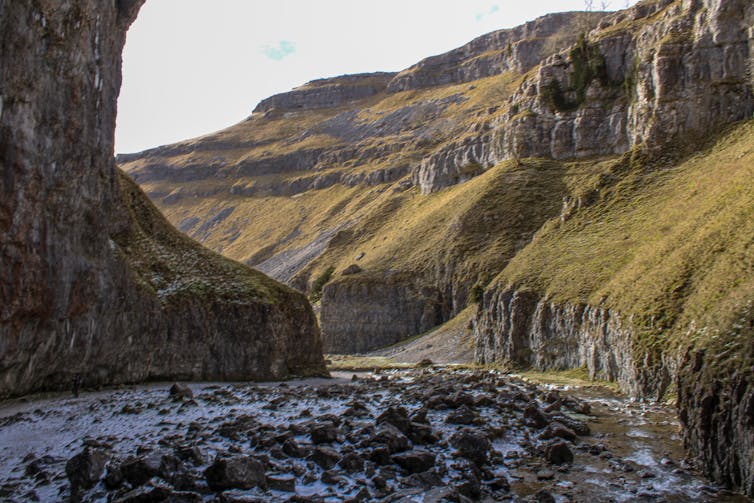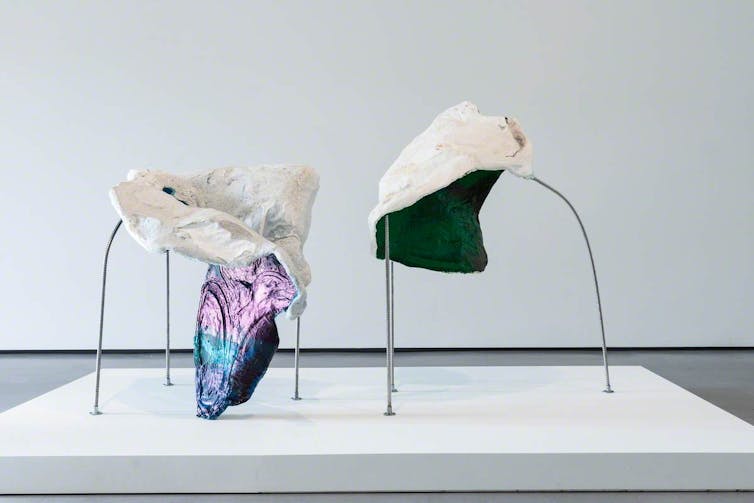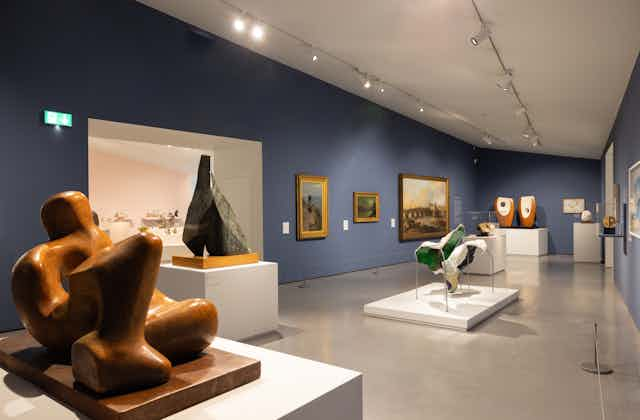When Barbara Hepworth died in 1975, fellow sculptor Henry Moore wrote an obituary in The Sunday Times with the headline, The Shaping of a Sculptor. Not only did it prominently feature their shared birthplace of Yorkshire, but the paper’s clever headline echoed the ways their respective artistic identities had been moulded by their early lives.
Almost half a century on, Yorkshire is home to two organisations that represent their legacies – the Henry Moore Institute in Leeds and The Hepworth Wakefield. A recently opened exhibition in Wakefield, Magic in this Country: Hepworth, Moore and the Land, celebrates the connection between the two artists and Yorkshire.
The highly abstracted forms Moore and Hepworth favoured – while never fully abandoning association with the human body in Moore’s case, or becoming completely geometric in Hepworth’s – were based on ideas of a common object language that could speak across cultures.
In discarding its conventional representational purpose, Hepworth and Moore produced a type of sculpture that was, as art critic Rosalind Krauss put it: “functionally placeless and largely self-referential”.

As if to demonstrate this, the Henry Moore Foundation manages an interactive webpage charting the locations of his sculptures in public places worldwide.
They can be found in their hundreds spread across five continents. Very few, if any, were made for a specific site or for any commemorative purpose. What is their connection to Yorkshire, then?
The shape of Yorkshire
Answering this question requires a more specific look at the kinds of comments both Hepworth and Moore made about their early lives in Yorkshire and how their youth informed their art.

When both artists were interviewed by American filmmaker Warren Forma in the 1960s, they each referred specifically to the juxtaposition of industrial and rural environments in West Yorkshire.
Hepworth noted the “industrial devastation” in and around Wakefield, “where everything was so dark and so black”. She contrasted it with visits to the Dales which were: “So magnificently shaped that the roads became … contours over a sculpture.”
For his part, Moore reminisced about:
A huge natural outcrop of stone at a place near Leeds which as a young boy impressed me tremendously – it had a powerful stone, something like Stonehenge has – and also the slag heaps of the Yorkshire mining villages. The slag heaps which for me as a boy, as a young child, were like mountains.
Two works by contemporary artists in Magic in This Country help visitors to see beyond a romanticised view of Yorkshire. Their work speaks to the violent exploitation of the environment and the impact of human activity that Hepworth and Moore saw in their youths and used as a reference point in their art.
Hepworth’s reflections on Yorkshire are crucial to artist Ro Robertson’s work, Between Two Bodies (2020).

The piece was created by casting in the cracks created by water erosion in rock formations in Cornwall and Yorkshire. The work explores oppositions between solidity and void, hardness and softness, animal and mineral.
Emii Alrai’s A Core of Scar (2022), meanwhile, takes historic images of Yorkshire as a starting point, particularly representations of Gordale Scar in the Yorkshire Dales National Park. The complex associations the sculpture creates with archaeological artefacts serve as a reminder of how a sculpture’s materials are often the result of digging into the earth and extracting materials from it.

Long before coal mining, locations that are now seen as beauty spots in West Yorkshire were exploited for construction materials in huge quantities, such as the mortar and plaster produced by the burning of limestone.
Thinking about what connects Hepworth and Moore’s sculptures to Yorkshire helps to understand the complex relationship between sculpture and the environment. Sculpture is an art form that depends on the use of natural resources, but through it, nature can be rendered and explored.
Magic in this Country: Hepworth, Moore and the Land is at The Hepworth Wakefield until January 2024.

